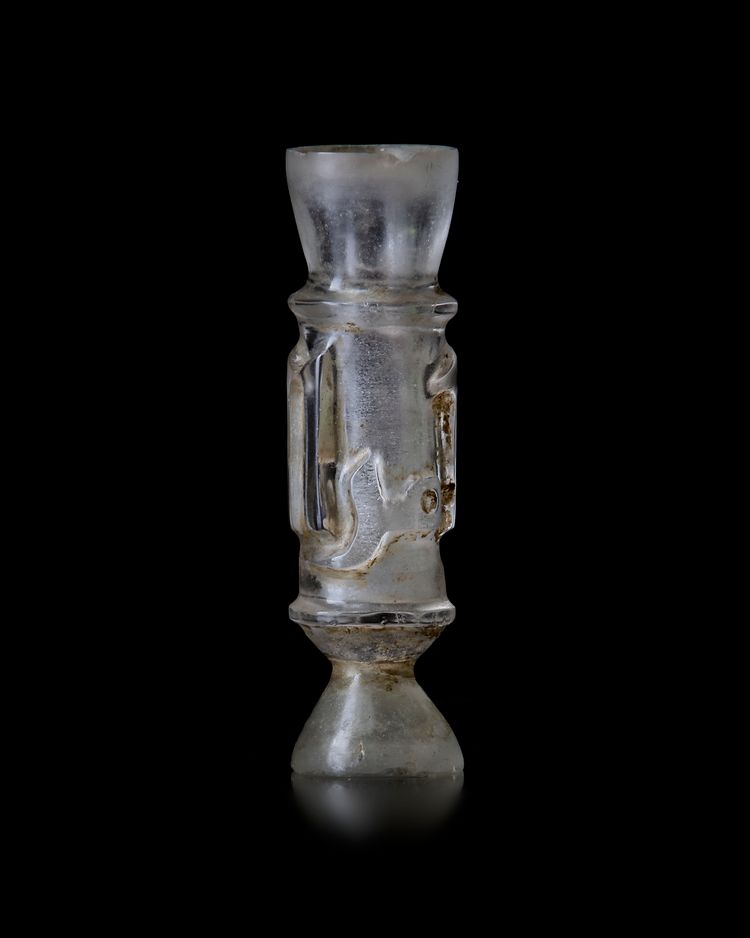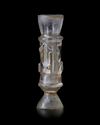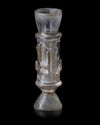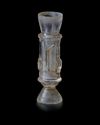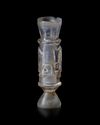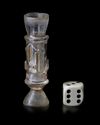A FRAMENTARY FATIMID ROCK CRYSTAL MOLAR FLASK, EGYPT, 10TH CENTURY
Of cylindrical body with flaring mouth, carved around the middle with a frieze of deep bold Arabic (Kufic script) around the body of the vessel: MOTHER OF PRINCES, above and below a horizontal raised rib
Sources differ on sultan al-Mu'izz's consorts. According to one version, he married a cousin of his, who gave him two sons, including his successor al-Aziz.[12] Other sources report that his main consort (al-Sayyida al-Mu'iziyya) or ( Umm Al umara 'mother of princes'), and mother of al-Aziz, was a Bedouin slave-girl from Arabia named Durzan, who due to her beautiful singing voice (although this may simply reflect a common stereotype about Arabian women) was nicknamed taghrīd ('twittering'). 6.8 cm. high
PROVENANCE Private collection, Belgium
CATALOGUE NOTE Small rock crystal like this bottle could not have held much, but their contents must have been very precious indeed to deserve such containers. They were most probably used for storing perfumes, which were among the most luxurious times of any Islamic court. They often survive in cathedral treasuries, where they were rededicated after being captured from their original Islamic settings. • R.H. Pinder Wilson writes: "Rock crystals together with woven silks were the first objects to reach Europe and to reveal to the West the artistic achievements of the Islamic world. It is, therefore, surprising that Islamic rock crystals have been the subject of systematic study only since 1912 when Robert Schmidt published eighty-three crystals. Since then, thanks to C.J. Lamm and Kurt Erdmann, the total number of known Islamic rock crystals stands at just under one hundred and eighty." (B.W. Robinson et al., Islamic Art in the Keir Collection, London, 1988, p.289). Since then, a small number of Islamic rock crystal items have appeared on the art market, bringing the total to approximately two hundred.
This bottle is carved in the bevel technique, without striations, suggesting a date of production in the earlier Fatimid period.
For an example similar to this flask, see Contadini, Anna, Fatimid Art, London 1998.
